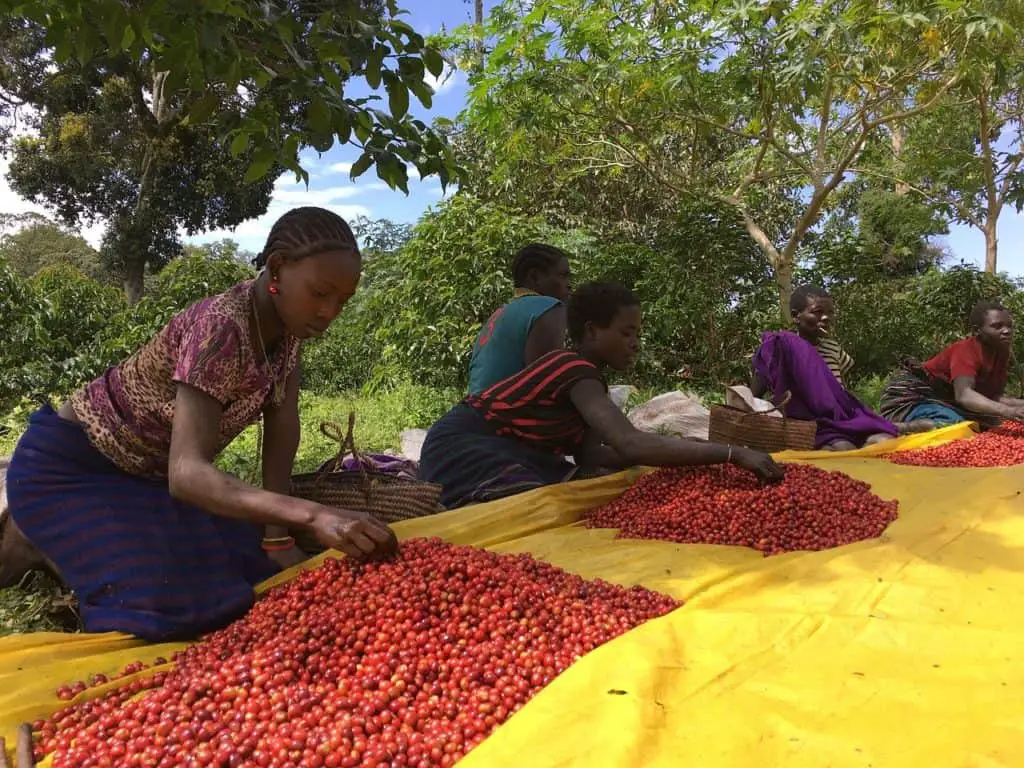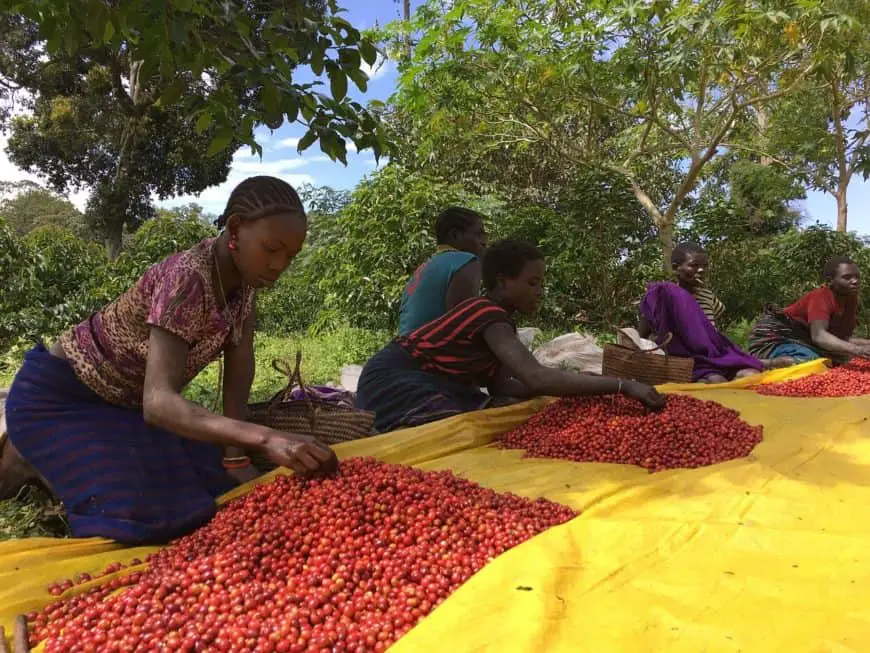
Learn the secrets behind your favorite cup of specialty coffee. In today’s blog, we’ll explore what single origin coffee really means, how terroir influences flavor, and why many specialty coffee shops now serve only single origin coffees instead of blends. Whether you’re a seasoned coffee aficionado or a curious newcomer, this guide will deepen your appreciation for coffee’s unique story—from the farm to your cup.
What Is Single Origin Coffee?
Single origin coffee is defined as coffee that comes from a single country, estate, cooperative, or even a specific micro- or nano lot on a farm. Unlike blends, which mix beans from various origins to create a consistent flavor profile, single origin coffees are celebrated for their distinctive characteristics. These characteristics result from the specific environmental conditions (or terroir) where the beans are grown.
Why Single Origin Matters
- Transparency and Traceability:
Consumers know exactly where their beans come from. Detailed labels often include information about the farm, cooperative, or specific lot, making it easier to trace the coffee’s journey. - Unique Flavor Profiles:
Factors like soil composition, altitude, climate, and local farming practices impart a unique flavor signature to the beans. For example, Ethiopian coffees often have bright, fruity notes, while Brazilian coffees tend to feature chocolate and nutty flavors. - Support for Sustainable Practices:
Single origin coffees often represent smaller-scale farming operations where ethical practices and sustainability are a priority.
Understanding Terroir in Coffee
Terroir is a term borrowed from the wine industry that refers to the complete natural environment in which a crop is produced. In coffee, terroir encompasses:
- Soil Composition:
The mineral content and texture of the soil affect nutrient uptake and flavor. - Climate:
Temperature, rainfall, and humidity play critical roles in how the coffee develops. - Altitude:
Higher altitudes typically produce beans with brighter acidity and more complex flavor profiles. - Local Ecosystem:
Natural shade, biodiversity, and farming practices also leave a mark on the coffee.
Together, these factors help create a “fingerprint” for coffee from a specific region—making each cup a true representation of its origin.
The 6 Types of Single Origin Coffee
Single origin coffee can be classified based on the scale of its production area. Below is a table summarizing the key types:
| Type | Definition | Yield | Price Range |
|---|---|---|---|
| Single Country | Beans grown in one country or region. Often showcase the broad characteristics of that area. | Variable | Moderate |
| Single Estate | Beans cultivated on a single farm. Usually of exceptional quality with limited production. | Low | Higher due to exclusivity |
| Single Cooperative | Beans processed as a single lot from multiple small farms within one cooperative. | Moderate | Moderate to High |
| Micro Lot | Beans from a single plot within a farm; very small-scale production emphasizing unique characteristics. | Very Low (50–70 kg) | Premium due to rarity |
| Macro Lot | Beans that represent a specific area within a country, similar to single country but more defined. | Variable | Moderate |
| Nano Lot | An even smaller subset than a micro lot, emphasizing extreme specificity and unique quality. | Extremely Low | Premium/high due to scarcity |
Note: Yield and pricing can vary based on market demand, production practices, and quality control measures.
How Single Origin Differs from Coffee Blends
Single Origin Coffee:
- Focus: Showcases the distinctive flavor profile of a specific region or farm.
- Quality: Often produced with meticulous care; variations are celebrated as a representation of terroir.
- Traceability: Detailed information on origin, processing methods, and even the microclimate is usually provided on the label.
Coffee Blends:
- Focus: Create a consistent flavor profile by combining beans from multiple origins.
- Quality: Designed to balance and sometimes mask the individual characteristics of the beans.
- Availability: Often produced in larger quantities for mass-market consumption.
Tip: When you taste a blend, it’s like sampling a composite flavor. In contrast, single origin coffees let you experience the natural nuances of a specific locale.
How Does Single Origin Coffee Taste?
The flavor of single origin coffee is influenced by its terroir. Here are some factors that affect its taste:
- Elevation:
Higher elevations generally produce sweeter and more acidic beans. - Soil and Rainfall:
The mineral content and water availability help develop the bean’s body and flavor complexity. - Varietal:
There are approximately 50 varietals of Arabica coffee, each contributing subtle differences to the flavor. - Processing Method:
Natural, washed, or honey processes can dramatically alter the coffee’s flavor profile.
Analogy: Think of two different apple varieties—a tart Granny Smith and a sweet Cripps Pink. Just as each apple offers a distinct taste, single origin coffees provide a unique flavor experience that blends simply cannot match.
How to Identify Single Origin Coffee
When shopping for single origin coffee, look for these key pieces of information on the label:
- Origin Details:
Information such as country, region, farm, cooperative, or lot (micro, macro, or nano) is clearly indicated. - Processing Method:
Labels often note whether the beans were naturally processed, washed, or underwent another method. - Varietal:
Details about the coffee varietal (e.g., Bourbon, Typica, Geisha) can hint at the expected flavor profile. - Roast Date:
Freshness is critical—always check the roast date. - Additional Data:
Some labels include elevation, tasting notes, and even the farmer’s story, enhancing the connection between you and your coffee.
Pro Tip: Ask your barista for recommendations. Specialty coffee shops usually have staff well-versed in the nuances of single origin offerings.
Final Thoughts
Single origin coffee and terroir provide an unmatched level of insight and connection to your daily brew. By understanding the different types—from single country to nano lots—you appreciate not only the quality and flavor nuances but also the rich stories and sustainable practices behind each cup.
Whether you’re comparing the bright acidity of a high-elevation Ethiopian coffee to the smooth, chocolatey notes of a Brazilian single estate, exploring single origin options can transform your coffee experience.
Explore, taste, and savor the uniqueness of your cup—because every sip tells a story.
Quick Reference Checklist
- Single Origin Identification:
- Check the origin label (country/region, estate, cooperative, micro/macro/nano lot)
- Look for processing methods (washed, natural, honey)
- Note the roast date for freshness
- Read tasting notes and farmer stories for added context
- Flavor Influencers:
- Elevation and climate
- Soil composition and rainfall
- Varietal differences
- Processing techniques
By combining in-depth technical details with practical tips and comparisons, this guide not only informs but also serves as an SEO-friendly resource for keywords like single origin coffee, terroir in coffee, specialty coffee, single estate, micro lot, and more. Enjoy your journey through the world of coffee—happy brewing!e origin coffee has given you an idea of how unique different coffee beans can be.
Happy Brewing!

